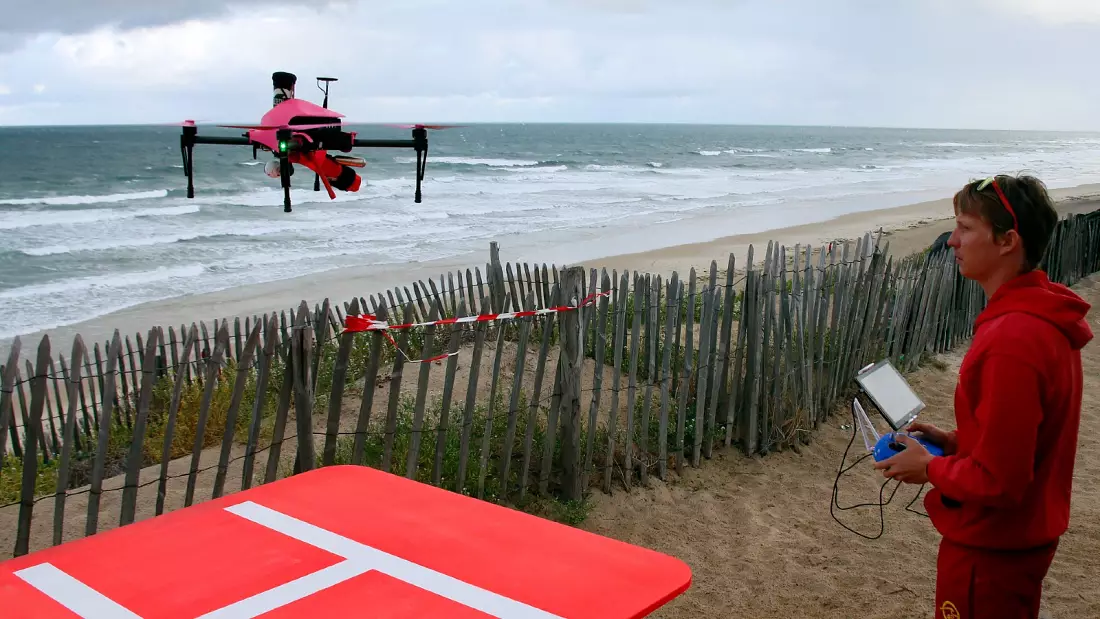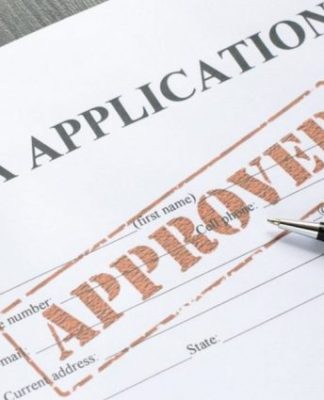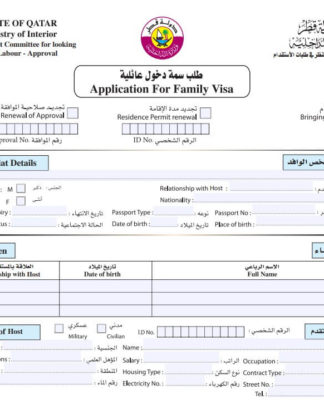From rescue drones to ‘AI lifeguards’: The tech making beaches and pools safer
Coming soon, to a beach near you – AI lifeguards and search and rescue drones.
Coming soon, to a beach near you – AI lifeguards and search and rescue drones. – Copyright File – AP Photo/Bob Edme
By Nicole Lin Chang • Updated: 30/07/2022
A boy is struggling in the sea. Waves wash over his head again and again, as he flails in the water.
But suddenly, a bright yellow life jacket drops down next to him, seemingly from out of nowhere. He manages to grab it, clinging on until lifeguards arrive and pull him to safety.
Footage of this incident, which happened off the coast of Sagunto in Valencia, Spain earlier this month, has been making the rounds online. And that yellow life jacket? That was the work of a rescue drone, deployed from shore to help the boy buy some time before first responders made it to the scene.
This was the fifth rescue made by Sagunto’s surveillance and rapid response drone system this season, the local mayor Darío Moreno told El País.
‘Lifeguard’ drone saved a drowning 14-year-old on a beach in Spain by dropping a life vest
It is a particularly dramatic example of how technology is increasingly being deployed to safeguard swimmers and members of the public.
When you’re stretching out on the beach or reclining by the pool, getting into an accident is probably the last thing on your mind. But drowning is a leading cause of accidental death, causing thousands of fatalities each year in Europe alone.
And from rescue drones to artificial intelligence (AI) systems that can detect when someone is drowning, there’s a whole host of technology out there aiming to make pools and beaches safer.
Reuters
A pioneering drone lifeguard service being rolled out across Spanish beaches saved the life of a 14-year-old boy this monthReuters
Drones to the rescue
The drone that helped save the boy in Sagunto is the work of General Drones, a Spanish start-up.
CEO Adrián Plazas told El País that he and his co-founder Enrique Fernández were both former lifeguards who were motivated to create General Drones after seeing a woman drown in front of them.
Their main goal was to build a drone able to endure humidity, salinity, high temperatures, rain, strong winds as well as sand exposure.
The resulting Auxdron lifeguard drone is designed for “the worst conditions at the beach”.
In addition to rapidly deploying life jackets to swimmers in need, it can also carry out surveillance, detect risks and search for victims.
AP Photo/John Minchillo
Beachgoers enjoy the surf at Smith Point County Park, a Long Island beach where a shark bit a lifeguard 10 days earlier, July 15, 2022, in Shirley, NY, USA.AP Photo/John Minchillo
A shark-spotting system that uses AI and drones
Of course, drowning isn’t the only threat swimmers face, especially if you’re swimming Down Under.
SharkSpotter is a system that combines AI and drone technology to identify sharks near drowning swimmers and then send an alert to lifeguards.
It will also give an overhead warning to those in the water when a shark or a potential risk is detected, using an onboard megaphone attached to the drone.
Spain hosts mass drone flight tests to prepare for a future where unmanned aircraft rule the skies
The system makes use of deep learning algorithms and image processing techniques to analyse real-time footage from the drones.
It detects and sorts objects into several categories, distinguishing between sharks and other marine life such as dolphins, rays and whales. It is also capable of distinguishing surfers, swimmers, boats, human beings and other objects.
The project is a collaboration between the University of Technology Sydney and The Ripper Corporation.
New Delta airport screen shows personalised flight info to dozens of travellers at once using AI
‘AI lifeguards’ that help prevent drowning
With the advent of live streaming and artificial intelligence, swimmers no longer have to rely solely on traditional lifeguards to keep an eye out for them.
SightBit is an Israeli company that markets its AI programme as an “AI lifeguard”, able to enhance standard off-the-shelf cameras with software based on deep learning and computer vision technology.
The company’s AI-powered system scans footage collected from surveillance cameras to detect incidents, analyses how life-threatening these might be, and then sounds the alarm.
MENAHEM KAHANA / AFP
A lifeguard carries a tablet displaying a programme called Sightbit, as another surveys the horizon at a beach in the coastal city of Ashdod, Israel, on February 14, 2022MENAHEM KAHANA / AFP
It can detect people, objects, sea conditions, vessels and animals, according to the company.
SightBit’s chief executive Netanel Eliav told AFP that he developed the technology after identifying a shortfall in how closed-circuit footage was being applied to boost safety in the water.
The programme has been in use for more than a year in the Israeli city of Ashdod on the Mediterranean coast, AFP reports. It chose to deploy SightBit technology in an area at a distance from the nearest lifeguard.
The latest in wearable health tech: Monitoring fever, stress and nightmares
An airbag that you can wear on your wrist
And finally, if you’re worried about potential accidents while out at sea or in the pool alone – why not bring your own inflatable device along with you?
Dubbed the “smallest inflatable device in the world’, Kingii is a bracelet-like gadget that you wear on your wrist.
If you get into trouble while in the water, pull the lever on your device. This activates the CO2 cartridge inside and deploys a small inflatable balloon in less than two seconds, lifting you to the surface.
The whole thing weighs 168 g and can keep a person up to 130 kg afloat.
Kingii says it is certified to be reusable more than 50 times. Users just have to repack the balloon and replace the CO2 cartridge.


























